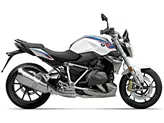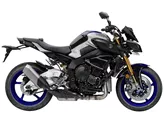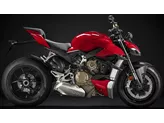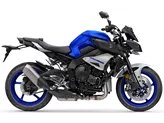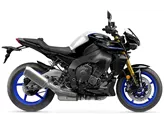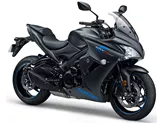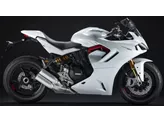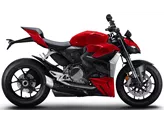Yamaha MT-10 SP 2017 vs. BMW S 1000 R 2016

Yamaha MT-10 SP 2017

BMW S 1000 R 2016
Vue d’ensemble - Yamaha MT-10 SP 2017 vs BMW S 1000 R 2016
The Yamaha MT-10 SP 2017 and the BMW S 1000 R 2016 are both powerful naked bikes with similar engine specifications. They both have inline 4-cylinder engines with a displacement of around 1000cc and produce 160 horsepower. The torque output is slightly different, with the Yamaha offering 111 Nm and the BMW offering 112 Nm.
In terms of suspension, both bikes feature upside-down telescopic forks at the front and swing arm suspension with a monoshock at the rear. The Yamaha has the advantage of electronically adjustable suspension, which allows for a more customizable and comfortable ride. The BMW, on the other hand, offers dynamic suspension, which adjusts automatically based on the riding conditions.
Both bikes have aluminum frames, but the Yamaha utilizes a Deltabox frame while the BMW uses a Twin Tube frame. The choice of frame design can affect the handling and stability of the bike, but it ultimately comes down to personal preference.
When it comes to braking, both bikes have double disk brakes at the front. The BMW is praised for its powerful braking system, which provides excellent stopping power. The Yamaha also has a good braking system, but it doesn't receive as much praise as the BMW in this regard.

Yamaha MT-10 SP 2017
In terms of advanced rider assistance systems, both bikes offer ABS and traction control. The Yamaha also includes additional features such as electronically adjustable suspension, riding modes, and ride by wire technology. The BMW, on the other hand, does not have these additional features.
In terms of dimensions and weights, both bikes have similar front and rear tire widths and diameters. The Yamaha has a slightly shorter wheelbase at 1400mm compared to the BMW's 1439mm. The seat height is also slightly different, with the Yamaha offering 825mm and the BMW offering 814mm. The Yamaha is slightly heavier, weighing in at 210kg compared to the BMW's 207kg. The fuel tank capacity is also slightly different, with the Yamaha having a 17-liter capacity and the BMW having a 17.5-liter capacity.
Now let's discuss the strengths and weaknesses of each bike. The Yamaha MT-10 SP 2017 is praised for its great chassis, which provides excellent handling and stability. The electronic chassis adjustments also contribute to a high level of ride comfort and utility comfort. The engine is described as very emotional yet still refined, providing a thrilling riding experience. The wind protection is also noted as being pleasant, making long rides more enjoyable. Overall, the Yamaha is seen as a well-balanced package despite its radical looks and aggressive sound.

BMW S 1000 R 2016
On the other hand, the BMW S 1000 R 2016 is praised for its powerful and well-controllable engine. The braking system is also highly regarded, providing strong and reliable stopping power. The seating position is described as comfortable, allowing for long rides without discomfort.
In terms of weaknesses, the Yamaha is criticized for its traction control, which is not up to the level of the Aprilia. Additionally, the seating position is seen as too inactive on the racetrack, limiting the bike's performance in that environment.
The BMW, on the other hand, is criticized for its expensive optional extras, which can make the bike quite pricey. The chassis is also described as hard, which can result in a less comfortable ride.
In summary, both the Yamaha MT-10 SP 2017 and the BMW S 1000 R 2016 are powerful naked bikes with similar engine specifications. They have their own strengths and weaknesses, with the Yamaha offering a great chassis, high ride comfort, and a refined engine, while the BMW provides a powerful engine, strong braking system, and comfortable seating position. Ultimately, the choice between the two will depend on personal preferences and priorities.
Caractéristiques techniques Yamaha MT-10 SP 2017 par rapport à BMW S 1000 R 2016
Avantages et inconvénients en comparaison
Avantages et inconvénients en comparaison
Yamaha MT-10 SP 2017

Avec la version SP, la MT-10 devient plus cool, plus désirable et, grâce à son châssis de haute qualité, plus performante. La suspension semi-active de la R1M est le meilleur produit dans la ligue des nakedbikes. La meilleure qualité et le meilleur fonctionnement combinés. Le châssis enthousiasme également sur les pistes de course. Malgré tout, la MT-10SP n'est pas une machine de course, car la position de conduite n'est pas assez active pour cela.
BMW S 1000 R 2016

Sur la BMW S 1000 R, on remarque à la fois la parenté étroite avec la Superbike S 1000 RR et la volonté de doter la machine d'un niveau de confort élevé pour la route et le quotidien. Le moteur quatre cylindres de 1000 cm3 se met donc au travail de manière brutale, tout en restant bien contrôlable, et la position de conduite est par conséquent confortable et sportive. Le fait que la S 1000 R soit l'une des power naked bikes les plus abordables est surprenant et réjouissant, mais il ne faut pas pour autant mettre la main sur la liste des équipements spéciaux - car grâce aux nombreuses caractéristiques irrésistibles, elle sera certainement plus chère.
Comparaison des prix Prix moyen du marché Yamaha MT-10 SP vs BMW S 1000 R
There are a few key differences between a Yamaha MT-10 SP 2017 and a BMW S 1000 R 2016. In terms of price, the actual average price of a Yamaha MT-10 SP 2017 is about 12% higher. A Yamaha MT-10 SP 2017 experiences a loss of 2,320 USD in one year and 1,580 USD in two years of ownership. This is offset by a loss of 380 USD and 1,940 USD for a BMW S 1000 R 2016. Compared to BMW S 1000 R 2016 there are less Yamaha MT-10 SP 2017 bikes available on the 1000PS.de Marketplace, specifically 4 compared to 10. It takes less time to sell a BMW S 1000 R with 69 days compared to 123 days for the Yamaha MT-10 SP. Since model year 2017 1000PS.de editors have written 18 reviews for the Yamaha MT-10 SP and 62 reviews for the BMW S 1000 R since model year 2014. The first review for the Yamaha MT-10 SP was published on 10/4/2016 and now has more than 28,600 views. This compares to more than 17,300 views for the first review on BMW S 1000 R published on 11/3/2013.


